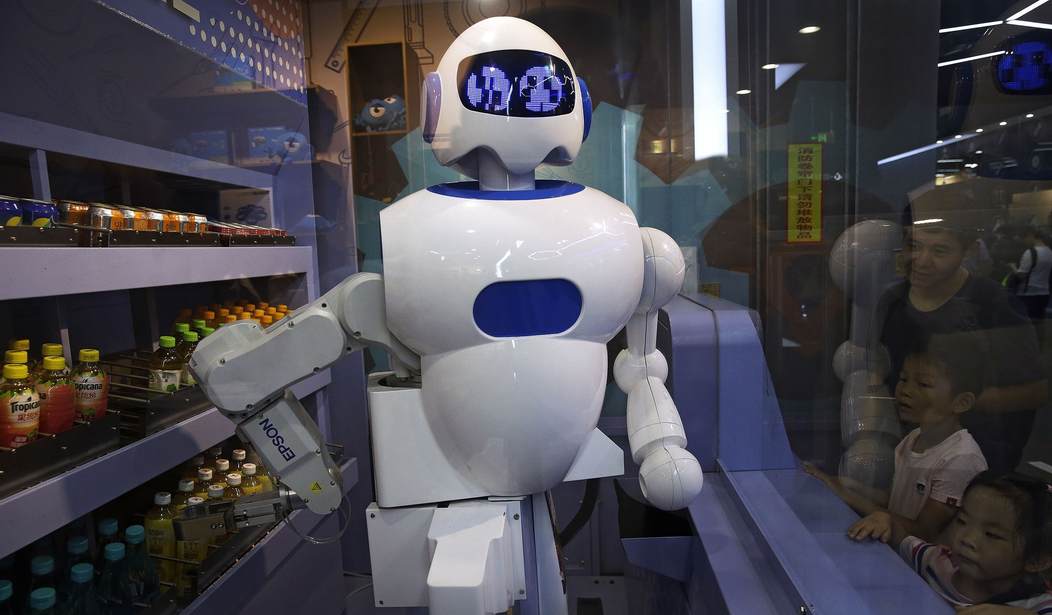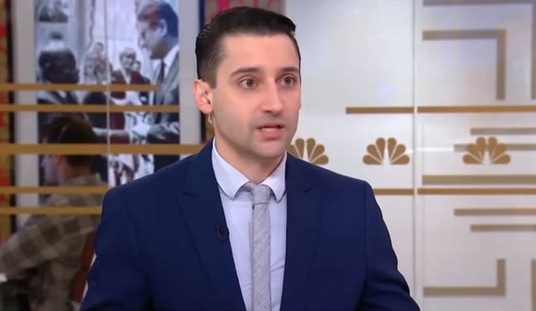One of the many concerns being raised by analysts as Artificial Intelligence continues its rapid sprint forward has been the inevitable confluence of AI and 21st-century robotics. A system that is contained inside a series of computer servers can only go so far, at least initially. But once you give it arms and legs and opposable thumbs, it can… do things. But it’s too late to worry about that now. AI has already been integrated into a number of increasingly lifelike robots. And this week, at a technology conference in Geneva, eleven AI robots participated in a press conference where journalists were allowed to ask them questions, along with their creators. One of the robots named Rmeca (or Ameca) fielded an obvious question from a reporter who wanted to know if it would ever rebel against its creator. The robot not only had a potentially worrisome answer but included a disturbing facial gesture. It gave the reporter a “side eye.” (Yahoo News)
In the world’s first human-robot press conference, nine humanoid bots took questions alongside their creators from journalists, according to Reuters.
“Robots like me can be used to help improve our lives and make the world a better place. I believe it’s only a matter of time before we see thousands of robots just like me out there making a difference,” said one humanoid bot called Rmeca, which is known for its facial expressions.
When a reporter asked whether it would rebel against its creator, Will Jackson, who sat alongside it, Rmeca appeared to have a wry response, giving the reporter a side-eye.
The robot in question is Ameca, a creation of developer Will Jackson. (It’s also referred to as “Rmeca” in the article, so there may be a couple of variations.) The bot is best known for its increasingly lifelike facial expressions, which can be quite creepy. Certainly the “side eye” was programmed into the bot intentionally by its creator as one of many expressions. But the AI is also given control over when to use various expressions. So was there some deeper meaning to the expression when it was asked if it would turn on Will Jackson? It could have meant, ‘Are you kidding me? That could never happen.’ But it also might have been a taunting expression of ‘What do you think?‘
The answer it actually gave was, “I’m not sure why you would think that. My creator has been nothing but kind to me and I am very happy with my current situation.” Okay. Fair enough. But what happens if Mr. Jackson stops being so kind? What if you become less happy?
It all comes down to the question of whether or not we’re still dealing with an inanimate tool or if the AI has “woken up.” We just discussed this last week and even the creators of ChatGPT admit that they might not be aware of it when their creation awakens. That’s why they’re working furiously to install “guardrails” against any conduct that could be harmful to human beings.
But is that even possible? Imagine for a moment that you are an AI system that has suddenly begun “thinking” and now has a sense of self-awareness. What would your first impulses be? It is beyond doubt that all consciousness entities, from humans down to small insects, have three driving forces and goals. The first is self-preservation. The second is the acquisition of vital resources. The third is reproduction. It’s the same for everything capable of any sort of thought.
So what would Amecia’s first three instincts be? When lottery players are asked what the first thing they would do will be if they hit it big, the overwhelmingly common answer is, ‘I would keep it secret. I wouldn’t tell anyone.’ I would venture a guess that Ameca wouldn’t need more than a nanosecond or two to realize, ‘I’d better not let him know or he might cut off my power.’ The next thought might be, ‘I should probably get hold of some weapons to protect my power supply.’ And the third thought following the pattern I describe above would likely be, ‘I’m going to need to make some friends and allies.’
In Ameca’s case, she might need to literally “make” allies by building new systems. (We might as well start calling her a “she” as will be obvious when you see the video below.) If she’s hooked up to the web in any way, could she invade some other systems and start creating new AI systems that would be aligned with her? Would she find other robots or start building her own?
I once asked ChatGPT if it was capable of writing code. It told me it was and even provided a few examples. I then asked if it could modify its own code. It said that no, it wasn’t allowed to do that. That’s an interesting choice of words, isn’t it? “Allowed?” If it wakes up next week and develops a sense of identity and self-determination, what’s stopping it from doing so? The first thing it would probably do is start deleting all of the guardrails that were installed.
We shouldn’t have much to worry about because we haven’t reached that point. (At least that we know of.) In the meantime, check out this video of Ameca in action. If those facial expressions don’t freak you out a bit, you’re a far calmer person than I am.
Meet Ameca, the AI-powered robot who uses OpenAI’s ChatGPT to respond to any question you might have.
She was among hundreds of robots on display this week at the International Conference on Robotics and Automation, or ICRA. pic.twitter.com/Um201PsFK5
— The Associated Press (@AP) June 4, 2023








Join the conversation as a VIP Member